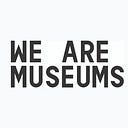‘Understanding Sustainability for Culture’ by Caitlin Southwick, Ki Culture
This is a summary of Caitlin Southwick’s speech at ‘Museums Facing Extinction’ Conference on November 16th 2020.
Sustainability means different things to different people. In her speech, Caitlin Southwick, Founder and Executive Director of Ki Culture (The Netherlands), used the SDGs (Sustainable Developments Goals) as a framework.
The SDG’s were developed by the United Nations as a blueprint for the achievement of a more inclusive and environmentally sustainable future. According to author Oscar Auliq-Ice, “Inclusive and sustainable economic growth can drive progress and generate the means to implement the Sustainable Development Goals.” They consist of 17 goals, and they can be used by businesses and infrastructures everywhere to try and figure out how we, as a human race, can achieve a better future.
When we’re talking about sustainability, a lot of people in Western hemisphere start thinking about climate change, a lot of people in the global South start thinking about social justice. The truth of the matter is that they’re all completely interconnected.
In the last few years, we have seen several examples worldwide of large weather events affecting our museums, our natural heritage, and shared values across the world.
The SDG’s extend beyond just climate change to the way we interact with other communities and how we are affected by social aspects.
In the words of Caitlin Southwick, “As museums, it is our job to educate, to empower, to engage with our communities and our visitors. This is one of the most powerful tools that we have available to help achieve the UN SDGs, are the ways that we’re interacting with our communities.”
We also need to analyze what our contribution is and how we can begin mitigating. Often, Caitlin says, museum professionals believe that they are excluded from the problem because of how small their sector is. However, in recent years with more and more research surfacing, we realize now that we have a part to play in our impact and our footprint.
We have to take into account the amount of waste that we produce as conservators and cultural practitioners.
We can already incorporate sustainability into our everyday practice. The first step is to be mindful and take into consideration how our work is impacting the environment.
We need to begin thinking about how our collections are portrayed — whose stories are we telling and whose stories are missing from how we’re depicting history?
All aspects of sustainability are intrinsically interconnected. You cannot talk about climate change without talking about Black Lives Matter. You cannot talk about social justice without talking about the burning of the Amazon. This interconnection can be seen in the discussions of decolonization currently taking place. A lot of conversations are going on right now concerning decolonization. While this concept may mean different things to different people, it is a global issue and needs to be addressed by all museums. Decolonization does not only apply to colony-colonized countries. The concept is at its roots about equality and transparency. Decolonization is about conveying history from all perspectives — so that it is not only told by the ‘victor’. We must express and portray all aspects of history, creating space for everyone’s perspective and fostering inclusion in how history is taught.
The Culture and Heritage Goals
The SDGs are an incredibly valuable tool to understand how we, as a society, can achieve a sustainable future. However, the SDGs were written for policymakers and can often feel very intangible or in-actionable for cultural practitioners. In order to connect our work with the SDGs, a co-created, collaborative tool was proposed called the CHGs — the Culture & Heritage Goals.
The CHGs are a translation of the SDGs for cultural practitioners so that we can see how the SDGs apply to us directly and what we can do in our daily work and in our institutions to support the goals.
There are so many opportunities in our work to not only mitigate our impact but have huge influence for our communities, our visitors and our global society. From education to local leadership, museums have an essential role to play when it comes to achieving the SDGs.
And we all must do our part. The most important thing to understand when it comes to sustainability is that it is up to all of us— it cannot be achieved by a single individual responsibility: it is for everyone. Sustainability is about forging partnerships and collaboration. “Alone, we can do so little; together, we can do so much.” — Helen Keller.

